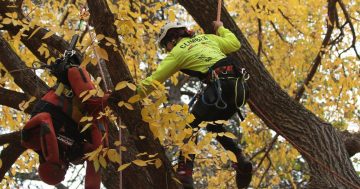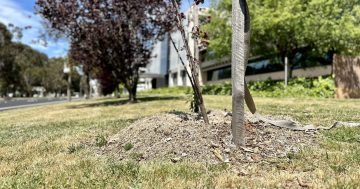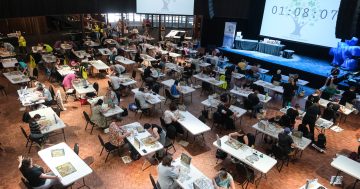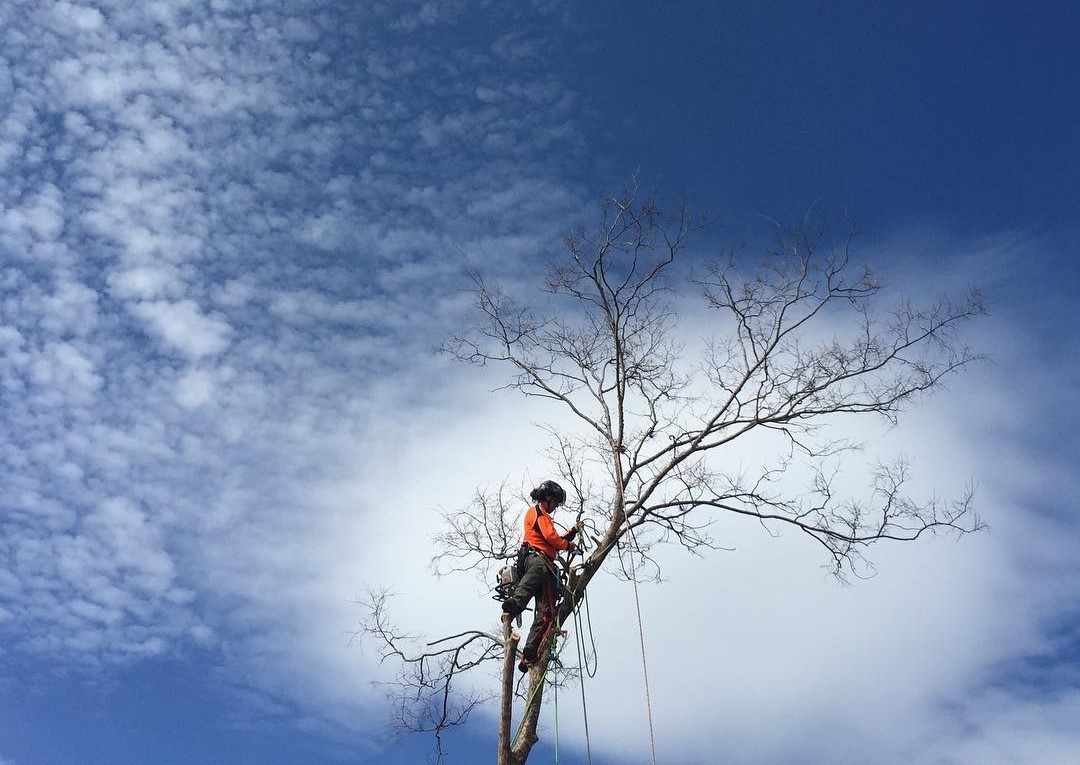
Maja Blasch atop a tree. Photo: Maja Blasch, Instagram.
Maja Blasch used to suffer from a fear of heights, but that’s far beneath her now.
“I used to get nervous when I was climbing but I’ve definitely lost most of that now,” she says.
Maja is a professional arborist for the ACT Government’s Urban Treescapes operations crew, pruning more than 790,000 trees on public land here in the Bush Capital. But she doesn’t stop there.
She’s also a competitive tree climber. Maja already has two Australian Tree Climbing Championship titles to her name and next week, she’s returning to her homeland of Denmark to compete on the international scene.
The International Tree Climbing World Championship ranks competitors on not only their speed but also their skill and finesse while scaling a tree. The last International Tree Climbing World Championship was held in 2019.
Maja’s reaction is modest.
“I’m not at the point where I think I could win, but I’m hopeful of doing reasonably well,” she says.
Like many, Maja wasn’t sure what to do when she finished school.
“But my dad said I had to do something, though, and suggested an arborist course at CIT.”
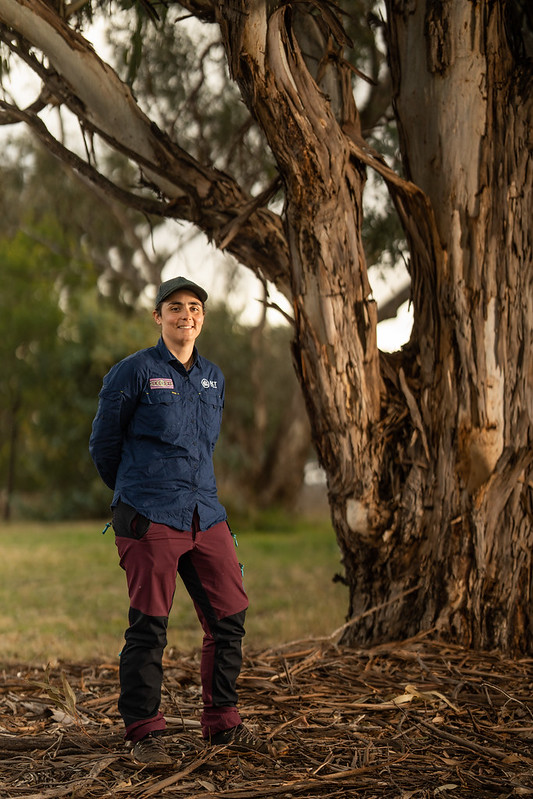
Maja Blasch has worked with the ACT Government’s Urban Tree team since last year. Photo: ACT Government.
From there, she gained a Certificate III in Arboriculture and then an apprenticeship with a local tree surgery company. After 10 years in the arboriculture industry, she joined the ACT Government team in 2021 as a crew leader.
By then, she had already racked up three honours in the sport of competitive tree climbing, starting in 2018. Maja is now the only competition-level tree climber in Canberra. And it all started when a friend suggested she gave it a go.
“She said that you’ve got to, because there’s nothing like it and everyone is super supportive,” she says.
As it turns out, most of her fellow competitors are even in the same line of work. And with good reason – Maja was already doing everything she needed to train.
“My personal philosophy is tree retention, so more about pruning than removal,” she says.
“I get to climb trees at work, so although the types of trees are different, there is that crossover.”
She might not be climbing the trees at work quite as fast, and she might not have to worry about the chainsaw during the competitions, but there is plenty of shared equipment too.
“We’re always attached to the tree with a rope and harness, so people imagine it to be a lot like rock climbing after that, but we’re also using the rope as a pendulum as we can climb up,” she says.
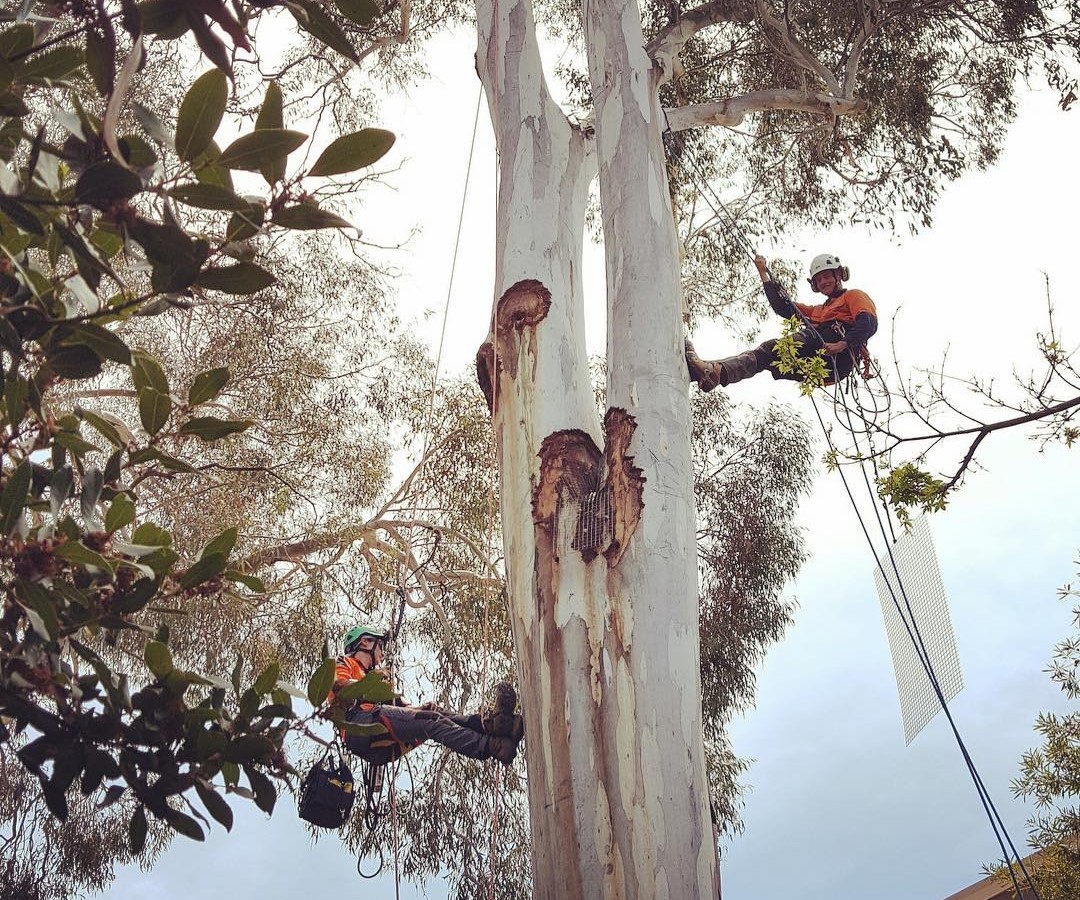
There are a series of ropes and harnesses to keep them airborne. Photo: Maja Blasch, Instagram.
The highest she’s ever climbed is 75 metres, in the Nerang National Park in Queensland. She’s also climbed in New Zealand, but is holding out for the massive redwoods in California.
“I would love to climb them,” she says.
But one thing is for certain – money doesn’t grow on trees.
“Some competitions offer money or climbing gear as prizes, but I’m spending more than I’m winning,” she says.
And then there’s the time.
“I’m out there training three to five times a week on top of work – you have to take all that time into consideration as well,” she says.
Most people who find out about her hobby are curious and “a bit of ‘I didn’t know that was even a thing'”. But she’s not really doing it for anyone else, let alone the scores.
“I’m more interested in competing against myself – setting myself personal goals and beating them,” she says.
“It’s just nice to have something to focus on that gets me outside and moving. And I meet really awesome people when I’m out travelling all over. It’s an excuse for a good time really.”
The 2022 International Tree Climbing Championship (World Championship) will be held in Copenhagen, Denmark from 9 to 11 September.












